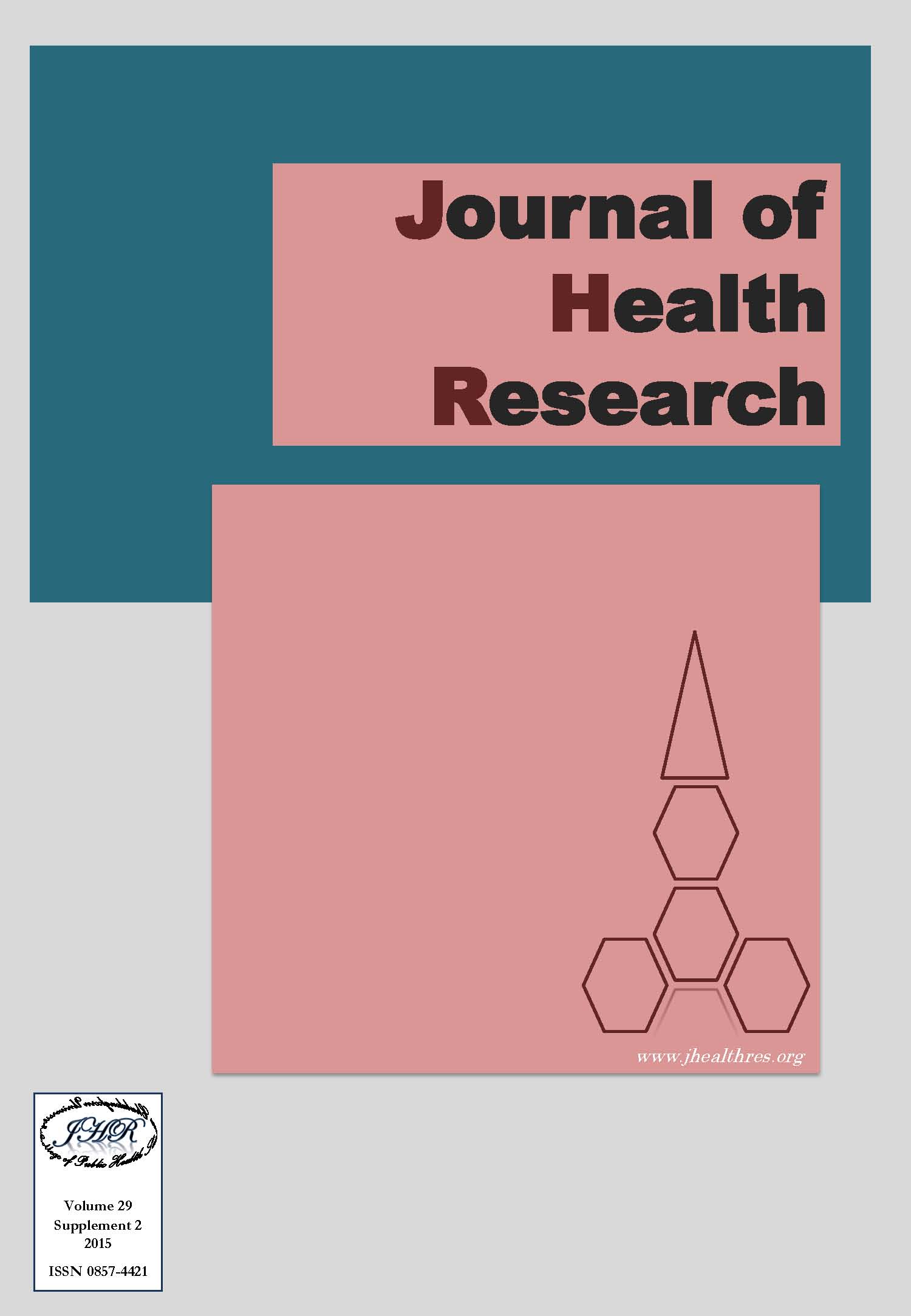Hearing capacity in relation to noise levels and other potential risk factors among press part machines workers in auto part factory in Samutprakarn, Thailand, 2012
Keywords:
Hearing Capacity Test, Noise levels, factors, Press part machine, ThailandAbstract
Background: This study evaluated associations between abnormal hearing and occupational noise measurement, socio demographic characteristics, protective behavior, and other factors that effect on the employees who worked at press parts factory; automotive part, motorcycle part, and fuel tank part in Samutprakran province Thailand.
Methods: Three hundred and fifty nine participants who worked at the Auto part factory more than 2 years were selected in the study. They were interviewed by using a standardized pre-tested questionnaire. Hearing tests and noise measurements were conducted in 2012.
Results: Most respondents were male (83%), aged 34 - 41 years. About 92% of them did not use personal protective equipment (PPE) foam. For experience with pressing part, they have done this for more than 9 years (60.2%). Result also showed the married, income more over than 15 THB, were significant, there were P-value 0.038, 0.002, 0.006 respectively (p< 0.05), noise-sensitive, married, education, there were P-value 0.015, 0.116, 0.148 (p< 0.15). The association between age and hearing capacity test in 2012 was OR=1.311, p<0.001, CI=1.227-1.401. However, no statistically significant associations between the PPE training, press experience more than 9 years, over noise standard, press experience more than 9 years, PPE training, attitude, average noise level. Prevalence of abnormal hearing was 20.9%. Characteristics associated with hearing loss differed substantially from year to year. Abnormal hearing was positively associated with the high level of workplace noise, but not with the average noise level. Unmeasured factors may also be associated with abnormal hearing.
Conclusion: Further research, which incorporates multiple regression analysis, is needed to confirm associations with abnormal hearing at the study location and elsewhere in Thailand.







